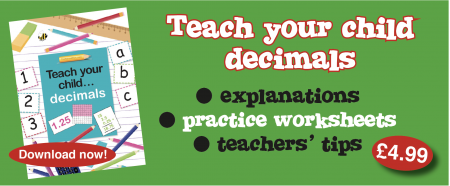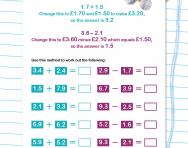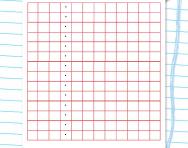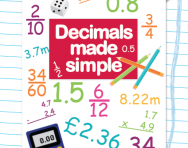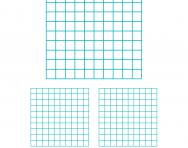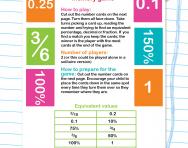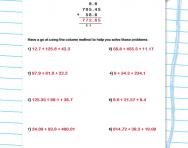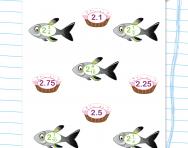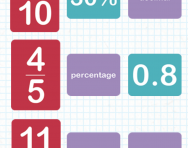Teachers' tricks for decimals
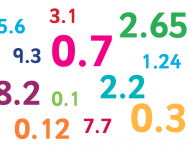
Use a blank hundred chart to show decimals visually
Children usually start to learn about decimals in Year 4. The first thing children need to know is that a decimal is A PART of a whole. A good way to explain this is to show them an empty hundred number square / chart: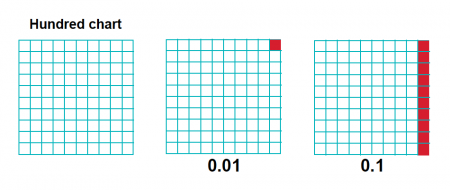
Colour in one square and explain that you have coloured in one hundredth (1/100) of the whole. Explain that this is written as 0.01, because the second digit after the decimal point represents the hundredths.
Colour in ten squares and explain that you have coloured in ten hundredths (10/100). This is the same as one tenth (1/10) and is written as 0.1, because the first digit after the decimal point represents the tenths.
Give your child a list of decimals (0.9, 0.13, 0.7, 0.54, etc) and encourage them to colour in these decimals on other blank hundred squares. This will help them to understand that 0.13 is smaller than 0.7 (they should have coloured 13 squares for the first and 70 squares for the second), as children can often get confused by this concept.
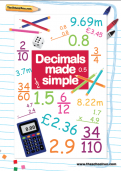
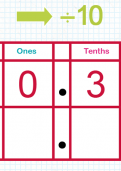
Claim FREE Decimals Resources Today
- Decimals workbook
- Interactive tutorials
- 100s of worksheets & games
Use money to explain decimals
If a child is really confused about decimals, converting decimal numbers into money is a great way to make things clearer. For example: a child may be asked to say how much bigger 1.3 is than 0.9. If they convert these decimals into money (£1.30 and 90p) they may find that they can do this calculation very quickly in their head, getting the answer 40p which they convert back into the decimal, 0.4.
Demonstrating that money maths depends on decimal understanding is also an easy way to prove that decimals are actually useful in real life!
Help them learn which fractions and decimals are equivalent
In KS2 children are taught that decimals are another way of writing fractions. The hundred number square is a really good way of showing children the equivalence between fractions and decimals, for example: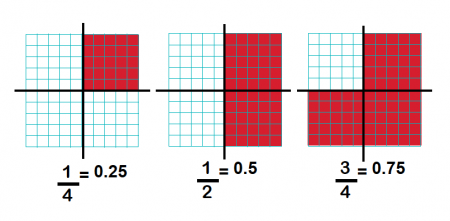
It is vital that they know that 0.01 = 1/100 and 0.1 = 1/10; that way when given a decimal such as 0.43 they can say that the decimal has 4 tenths and 3 hundredths.
Children may be asked to write 9/10 as a decimal. Again, the hundred number square can be useful for this: ask them to colour in the 9/10 and they'll realise that this is the same as 90/100 which is 0.9 as a decimal.
Make your own decimal stick
Never underestimate how much a visual representation of what can otherwise appear to be an abstract concept can help children learn.
As well as a printed blank hundred square, another way to visualise decimals is to make a decimal stick. Get a cane or long stick, place with tape a number 1 to the right hand end, then a 0 to the left. Ask them now to place 0.5 in the middle, then together work out where all the other decimal points should go.
Lego and toy bricks can also help with decimal and fraction work, even if your child stopped playing with them years ago! For example: Put 10 Lego cubes into a clear freezer bag, stuck together. Explain to your child that the 10 bricks represent one whole item. Ask them to pull out a few cubes. How many have they selected? Can they write this number down as a decimal? As they get more confident use 20 cubes, or use 2 towers of cubes (so they might pull out, for example, 1.4 of the total).
Solving decimal problems
Calculations in Key Stage 2 often are involving decimals, but remind your child that all the calculation strategies they've learned still apply. With story problems, encourage them to underline important words and numbers and work through steadily. For example:
Joseph joins four pieces of wood together. One is 1.41cm long, one is 23.87cm long, one is 22.2cm long and the fourth is 44.47cm long. How long is the wood altogether?
Children may find the easiest way to work this out is by using the column method, where all the numbers are placed in a column, one on top of the other. It is vital that they remember that the decimal points of each number must line up. Once they’ve worked out using pencil and paper, let them check on a calculator as using decimals accurately on a calculator is an important real life skill too.
Rounding up decimals
Children will be learning at school how to round up decimals to the nearest whole number.
A fun way to practise this at home is to use regular dominos and establish that each piece is a decimal number (so a domino one with 3 dots and 4 dots is 3.4). Encourage them to play with the dominos, but with the rule that they can only, for example, join 2 dominos that are within 1.5 of each other. This will really get them thinking about what each decimal point represents.
A number line can also be useful when rounding decimals:
Give your child a number, for example: 0.7, and ask them to round it to the nearest whole number. If they are unsure, explain that if the tenth number is 5 or bigger, you round up to the next whole number. If the tenth number is less than 5, you round down to the smaller whole number.

Give your child a headstart
- FREE articles & expert information
- FREE resources & activities
- FREE homework help
